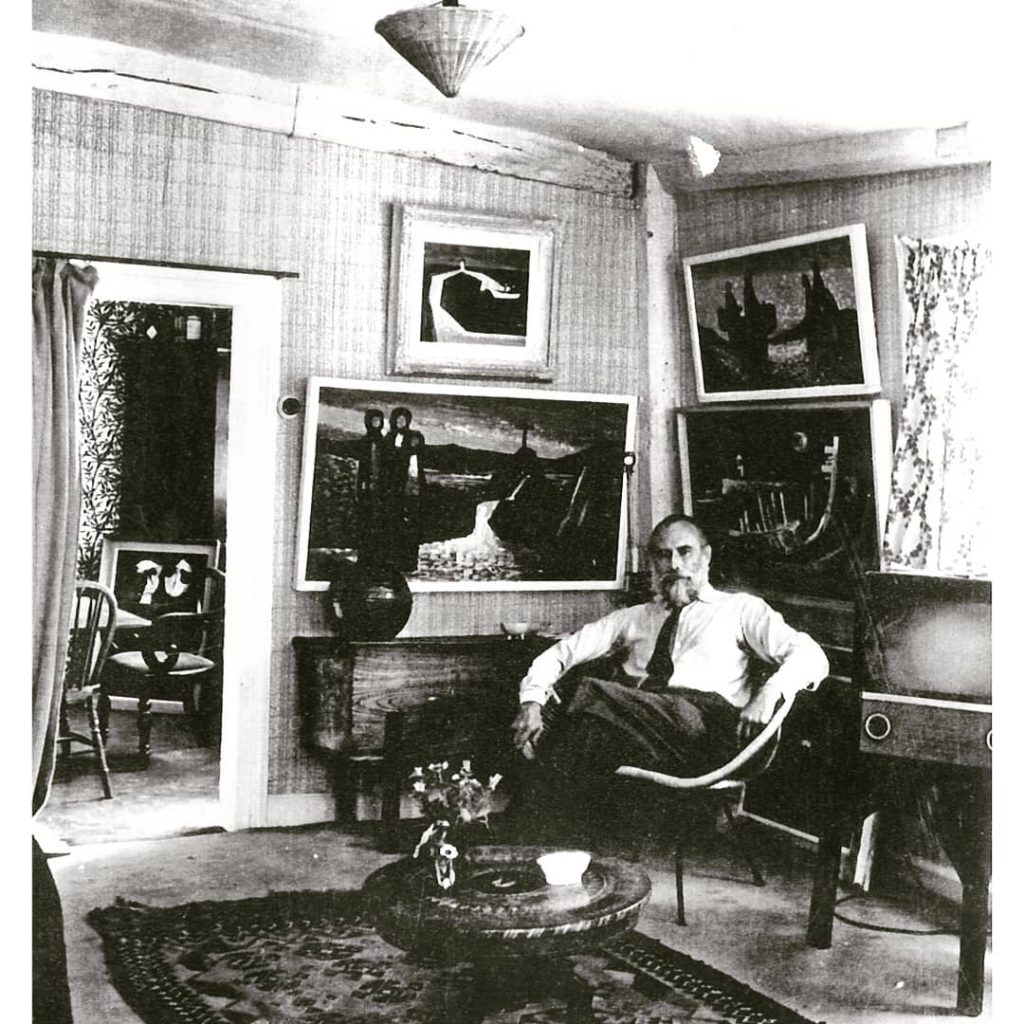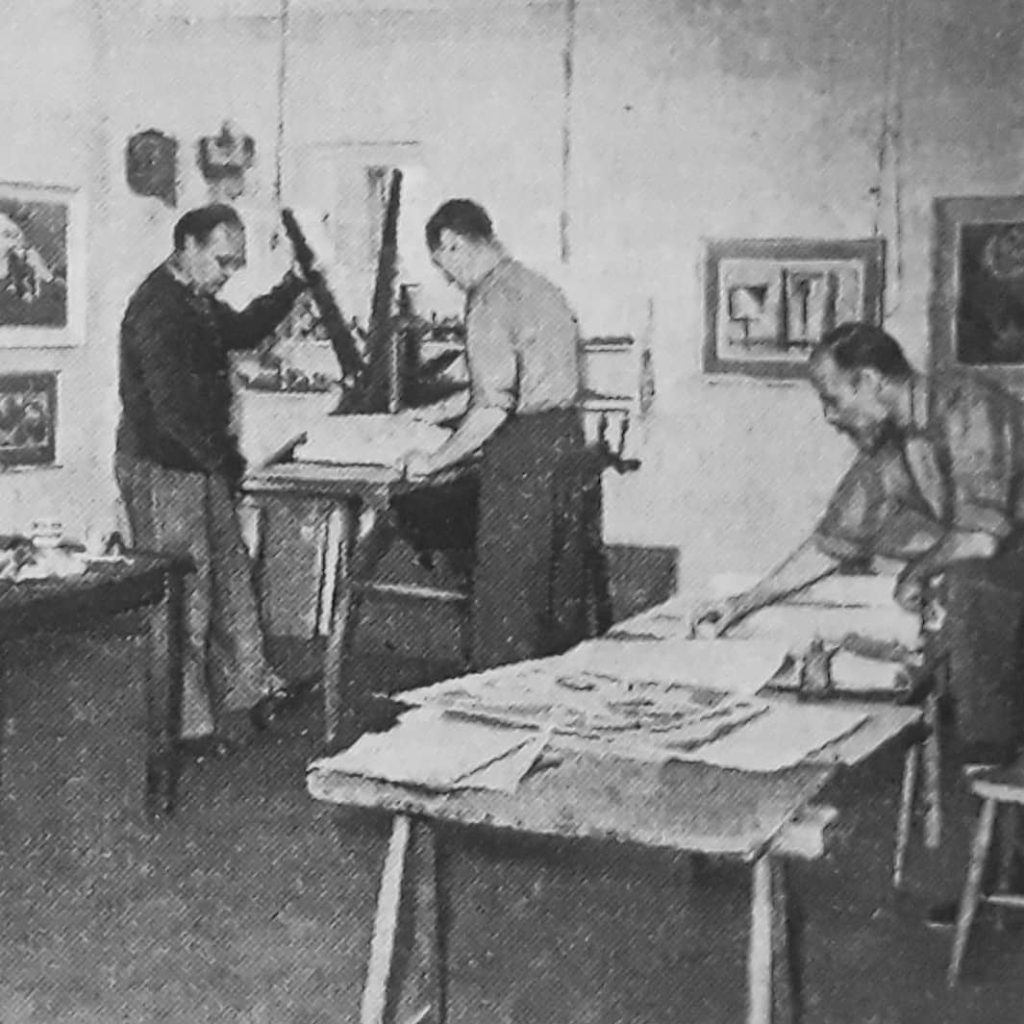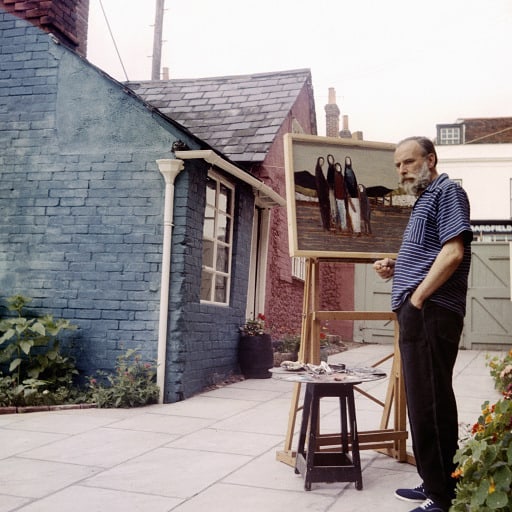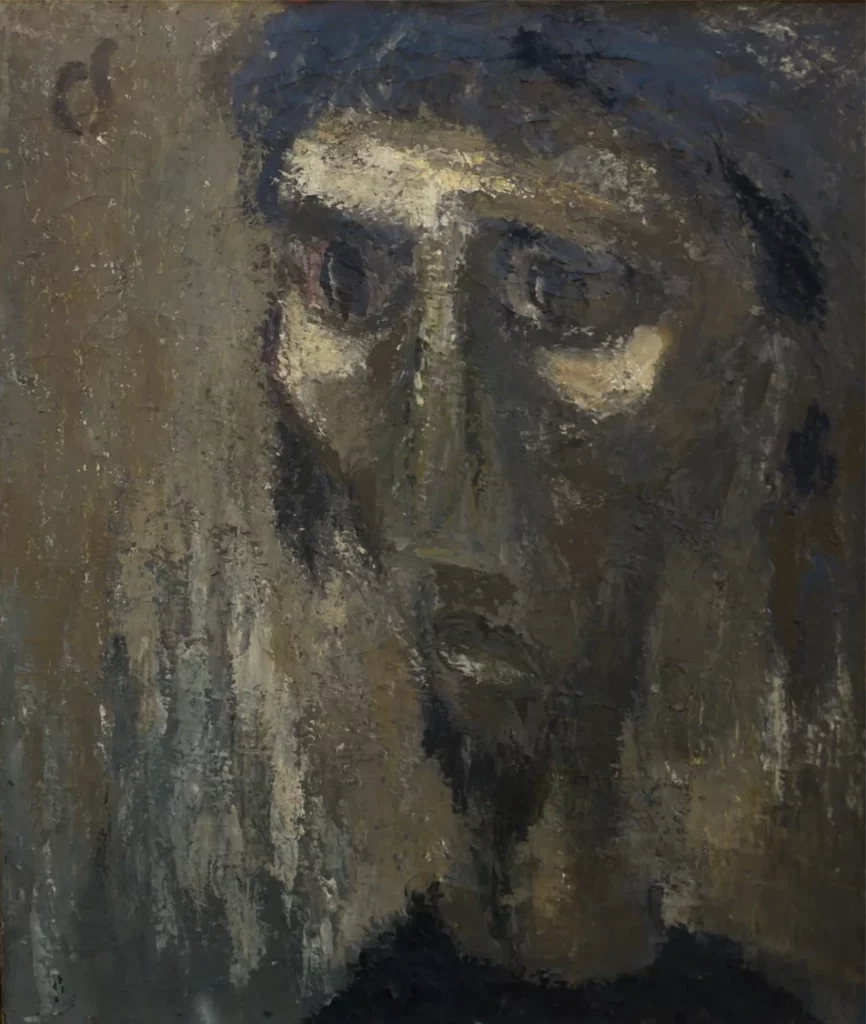Stanley Clifford Smith is one of the forgotten artists of Great Bardfield. It isn’t because he is less talented, or there are fewer works, but mostly because his legacy hasn’t been part of the weaving of history penned by the Fry Art Gallery in Saffron Walden. They own no works by him and have refused donations due to the sizes of some of the works. So with this stalemate situation, he is likely to be overlooked for years to come.

It’s a shame as his work is different to the other artists, it is a raw abstraction that Michael Rothenstein and George Chapman flirted with and would make the collection less bucolic.
Stanley was born in 1906 in Reddish, Stockport, Cheshire and was educated in Manchester and Paris. He worked as a designer at first, drawing up carpets for James Templeton & Co in Scotland but he saved money from his job to paint, much like Keith Vaughan. It was at this time that he first began to paint. He moved to London and served in the forces during World War Two.

He married Joan Glass (1915-2000), an artist, potter and designer. The couple left London for Suffolk in 1947 and then to Great Bardfield in 1952. In ‘Bardfield he was able to work in a large studio and paint in a French abstract way. His works are brash, colourful and quite exciting. Most of the artists in the village were all quite different in style to each other, meaning that there was no great influence or jealousy between each other, unlike in St Ives, Cornwall, where most of the artists were sticking to a harsh religion of abstraction that Ben Nicholson has introduced, having stollen it himself.
It was Clifford-Smith who encouraged the idea of doing Open House exhibitions, where for a weekend the artists would open their doors and use their homes as galleries. The idea was popular with the public who at this time thought the world of artists to be strange and full of bohemian ways; and it was popular with the artists who wouldn’t have to hand over any fees to galleries.
With the help and promotion of various people, including John Rothenstein at the Tate (Michael’s brother) the village became flooded with the art loving and nosey public, keen to see art and interiors. The shows ran from 1954, 55 and then 1958. After this the community in the village started to disintegrate as many of the artists where dead, divorced or moving to larger towns.
Benjamin Britten bought one of his paintings and so it can be seen in his old home at Aldeburgh, Suffolk; and another fine example can be found in a new position in the church at Thaxted.

